Last week, we read how Joe Shaw joined Black Mask and changed it; this week, I’m reviewing the February 1927 issue, from the first year of Joe Shaw’s editorial reign. At this point the magazine hadn’t developed into the 100% pure hard-boiled version it became later. Westerns, detective and adventure stories were promised by the subhead on the cover, and delivered in the contents. The fiction content is 128 pages; there are nearly 32 pages of advertisements, not counting the covers. The magazine must have been insanely profitable.
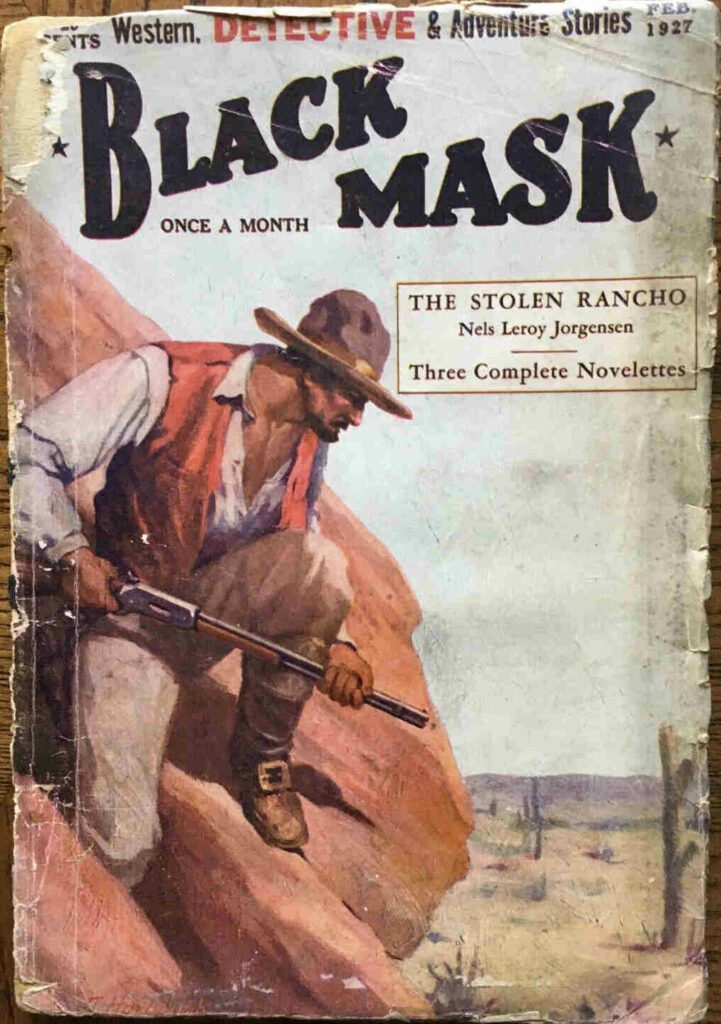
Interior illustrations are by three artists – Lynn Bogue Hunt for the novel serialization (a wildlife artist for an African hunting novel), Fred Craft with a full page illo for Erle Stanley Gardner’s story and Arthur Rodman Bowker for everything else.
There are two reprints, one from a thirty year old magazine and the other is a book from twenty years ago. Why? Read on and find out.
Detective
The Big Knockover (Hammett’s back)
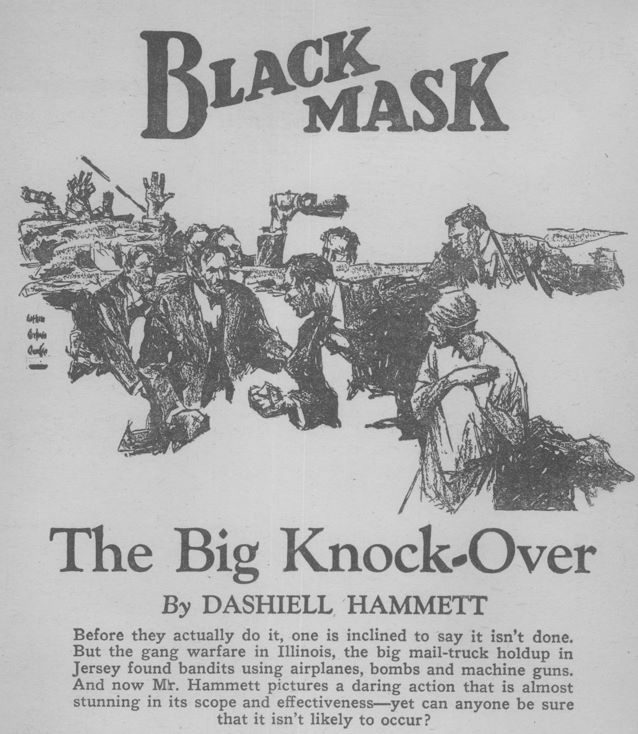
This story heralds Hammett’s return to Black Mask; he had stopped a year earlier after a payment dispute. Shaw lured him back after paying the disputed amount. The result is this novelette of 32 pulp sized pages, set in San Francisco. The decision to include it in this issue must have happened late because Hammett’s name on the cover would have been a draw. It has a thrilling first half.
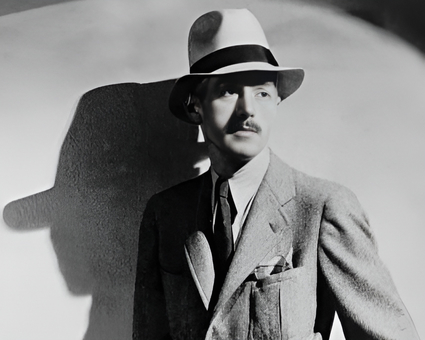
A company of over a hundred gunmen cordon off an entire city block and loot two banks, leaving with multiple millions of dollars in loot. Clues point to an operation organized with military precision. Lieutenants in charge of platoons secure strategic positions, covering the entry and exit of the robbers. Captains wait in staff cars, overseeing the siege and departure. The general is far behind the front lines, having recruited troops and planned the operation. Only the captains know the general, the lieutenants only know their captains and the troops only know their lieutenant and perhaps a few can recognize some of the captains.
After the robbery, lieutenants and troops are gunned down. The troops are denied their share of the loot. Then we come to the weakness in the plot. One of the captains frequents a speakeasy that he used to go to before the robbery. Even though the cops know he’s been an active participant in the robbery. And the troops know he’s a captain.
A grand conspiracy might have saved this story, something like top cops and politicians covering up for the robbers in return for a payoff, votes or both. Instead we get a series of incidents that don’t quite add up. There’s a twist at the end, but I found it predictable.
Read it for the first half and Hammett’s prose. You can find it in this collection.
Stolen Rancho
Nels Leroy Jorgensen(1899-1959) was one of the mainstays of Black Mask, delivering westerns and hardboiled fiction with equal facility from 1925 to 1938. Jorgensen’s main character in Black Mask was the appropriately named “Black” Burton, a hard-boiled gambler with an oversized lump of fair play and the gunplay skills to back it up and stay alive. Burton’s stories spanned twenty-five years, a landmark for a pulp character, starting in Black Mask from 1925 to 1938 and then in Black Book Detective from 1947 till 1950.
This story is a western, as you can tell from the title. Jorgensen’s hero in this story, Dan Martyl, is son of the owner of a California ranch bordering Mexico. He relies on brains, carrying no guns.
The story starts with three riders coming to Dan’s ranch in search of a horse thief. One of them is the local sheriff, the other two are from Mexico. They’re on the trail of a horse thief who shot another Mexican, or so they say. The sheriff doesn’t really care, one wounded Mexican doesn’t count for much. Dan sends them back, promising to look for the fugitive. He finds him taking care of the stolen horse, and disarms him. The fugitive tells another story, the men hunting him have stolen his ranch and want to kill him because he knows where the original deeds are. Who’s telling the truth? And will our hero be able to deliver justice unarmed and mostly single-handed?
Jorgensen sets up the situation well, going beyond the usual sketchy characterization of the pulps to give us a glimpse into Dan’s mind. The sheriff’s casual racism is outweighed by Dan’s concern for the truth and willingness to accept Mexicans as humans, good and bad, like we all are. The ending feels somewhat forced but then its hard to have a good shootout when your hero has no guns.
White Murder by Raoul Whitfield has as its major plot point a murder in the sky, perhaps the first mystery in which that happens. Agents of a detective agency (inspired by Hammett?) are pursuing a witness in a murder case who escaped his minders and flew away, only to land on the ground as a corpse. In a parachute. The agents know who killed him – it’s the criminal whose crime the witness saw and could testify to. Will they get the criminal? Both the murder method and the way of capturing the criminal are implausible. Not Whitfield’s best; I much prefer his Jo Gar stories.
J. Paul Suter’s McGregor Daunt is a clerical detective, called in to solve odd cases with a hint of the otherworldly. In the Tail of the Serpent, the odd thing is an ancient Egyptian amulet, one of a pair, that turns up inside a sealed display case that previously held the other half of the pair. No evidence of tampering. And then there’s a murder and the amulets are stolen. An eyewitness to the scene describes a murderer who vanished into thin air while the murder was being committed. Nice beginning but the explanation requires a number of coincidences and improbabilities that render it implausible.
Adventure
Cutcliffe Hyne’s Captain Kettle is a hero of the rogue school, always looking out for number one. This was surprising when his stories first appeared in the Victorian era, but by 1927 rogue heroes were commonplace. As common as masked millionaire playboy crime fighters are today. In Fortunes Adrift, he comes across a German steamer which had an engine breakdown and is drifting near the African shore as a hurricane approaches. Kettle demands a ruinous price for his salvage services, and gets it. But his own vessel breaks down after the storm passes. They both have to be rescued by another ship. Slim plot, no real tension.
Fortunes Adrift isn’t described as a reprint anywhere in the magazine. The reprinting of this series started in December 1927, one issue after Shaw took over as editor. It feels like a cheap way to pad out the magazine. Shaw reprinted another series, Red Saunders, later.
As does The Man Eaters of Tsavo, which was – surprise, surprise – reprinted in Field and Stream from October 1926 to April 1927 at the same time as Black Mask. The same illustrations were used in both, maybe even the same plates. Very economical for Warner Publications, the owner of both magazines. Early to bed, early to rise, get value for each dollar twice seems to have been the company motto.
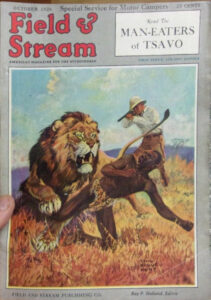
On the merits of the story or book, I don’t have anything to say. It was published in 1907 and became the basis for at least 3 Hollywood movies. The most recent one, The Ghost and the Darkness, is probably the second-biggest movie out of a novel printed in Black Mask, coming in after Hammett’s The Maltese Falcon.
Ironically, the next page after Tsavo has a page long editorial by Shaw where he tells his readers that he just rejected a novel by a big name because it wasn’t up to Black Mask standard of quality. Of course the big name and the book remain unnamed. Then Shaw asks his readers to recognize and promote Black Mask as a quality magazine, referring their friends. Cheeky bugger.
Mystery
Erle Stanley Gardner’s The Cat-Woman has a plausible yet preposterous plot, virtually no characterization and should be a stinker. A woman comes to Ed Jenkins, the Phantom Crook, asking him to steal her necklace and her niece. She will sign an agreement drawn up by a lawyer to that effect, with witnesses and all. Jenkins will get ten thousand dollars for his services. Jenkins, not being a complete fool, distrusts this generous offer and starts looking for the truth. Which leads to plenty of action and fortunes swing from favoring Jenkins to his opponents throughout the story, creating enough suspense to make this story fun.
The Verdict
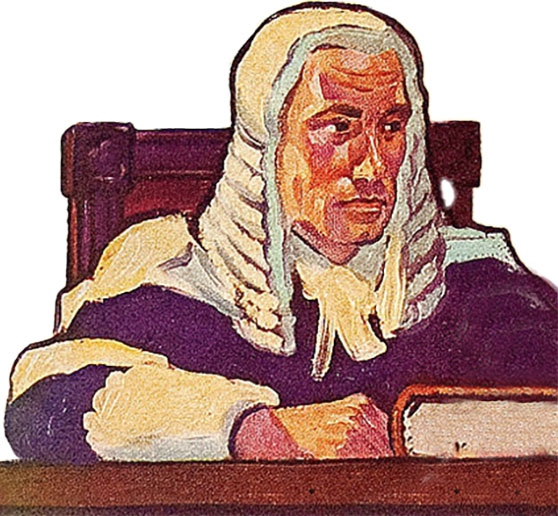
There are promising signs in this issue of the Black Mask that would emerge later in Shaw’s reign. The first half of Hammett, Suter and Whitfield’s stories are good but the plots sag in the middle. Gardner’s story is exciting but implausible. The quality isn’t there yet; no stinkers but also nothing really stands out. I’m a fan of adventure fiction, but the reprinted content in this issue is not stuff I would pay money for.
Next week: Another Shaw issue